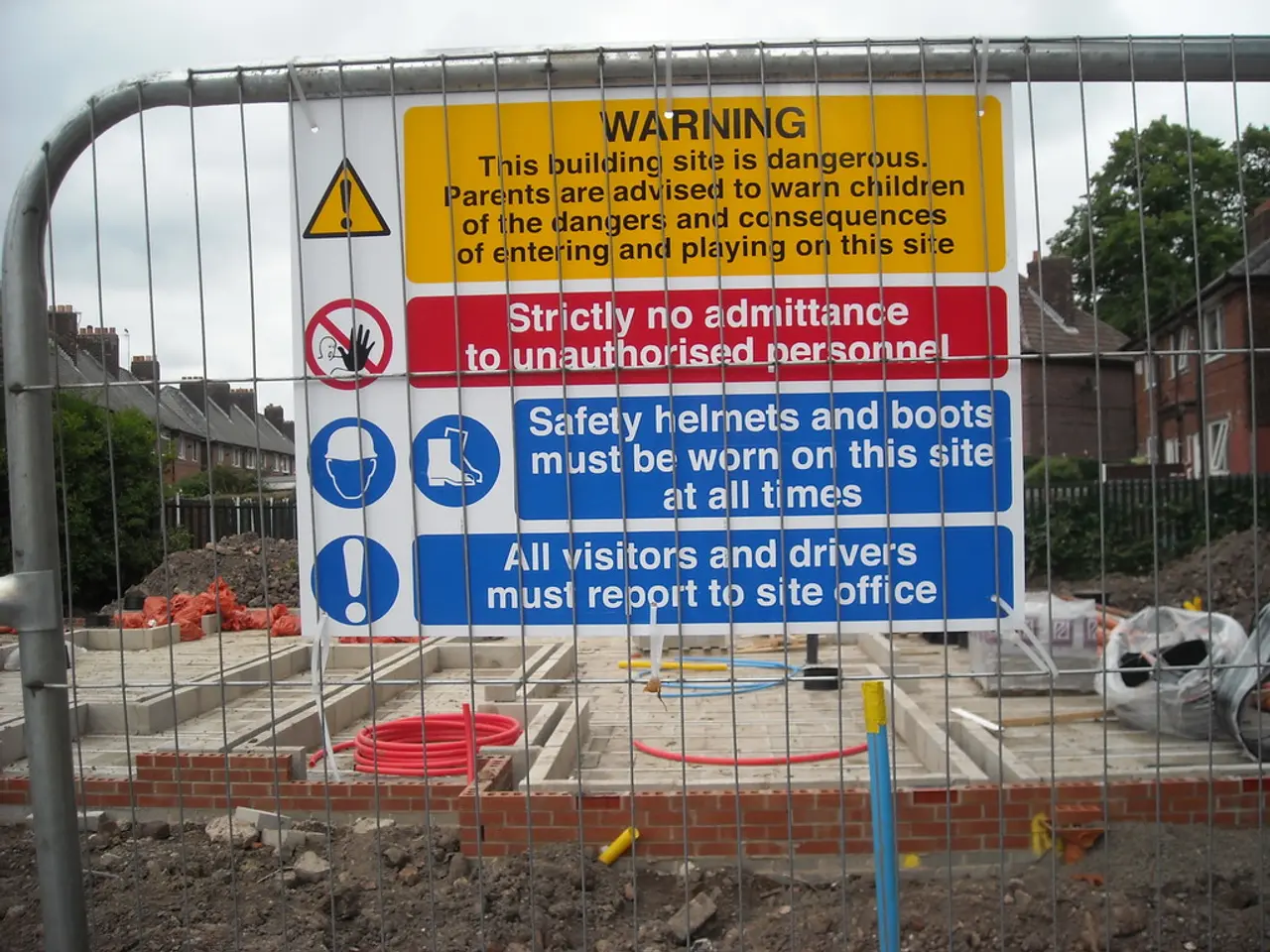Buildings with hazardous cladding remain unrepaired, according to recent findings among developers
UK Pushes Forward with Cladding Remediation in Tall Residential Buildings
The UK government has been actively addressing the issue of unsafe cladding on tall residential buildings since the tragic Grenfell fire incident. As of March 2024, the cladding remediation process is underway but significantly incomplete.
Current Status of Cladding Remediation
There are over 5,200 residential buildings 11 metres or taller identified with unsafe cladding requiring remediation. By July 2025, 48% of these buildings had started or completed remediation, with 34% fully completed. This indicates that progress was still behind but was being actively pushed forward.
The government has set out remediation acceleration plans to ensure work begins on the most at-risk buildings by March 2025, particularly targeting high-rise private sector buildings with Aluminium Composite Material (ACM) cladding.
Government schemes like the Cladding Safety Scheme and the Building Safety Fund have been implemented to support remediation and reduce residents’ financial burden. However, there are ongoing challenges in assessing all eligible buildings, with many still in pre-application or eligibility assessment stages.
Legal Responsibility for External Repairs
The primary legal responsibility for remediation works, including cladding replacement and fire safety upgrades, lies with building owners and developers—those who have control over the building and its external fabric. Developers of new private sector high-rise residential buildings are expected to lead remediation efforts or be held accountable.
For buildings in government-funded remediation schemes, responsibilities may be shared or supported by public funding, but ultimately the building’s responsible entity (owner, developer, or management company) bears the repair obligation. Enforcement measures and penalties have been introduced to compel responsible parties to complete remediation within set deadlines.
Responsible Parties and Financial Implications
Responsible parties for buildings with dangerous cladding include the building's freeholder or head leaseholder, a registered provider of social housing, a management company, and a right to manage company. The Building Safety Levy is expected to be expanded, requiring the industry to pay approximately £3bn over the next 10 years.
Only one person or organization can be legally held accountable for a building's external repair. The overall number of buildings where remediation work has started or been completed has more than doubled since the end of February 2023.
As the remediation process continues, the UK government is committed to ensuring the safety of its residents and holding responsible parties accountable for completing necessary repairs. The government's efforts, coupled with industry cooperation, aim to create a safer living environment for all.
[1] Government statistics on remediation progress on high-rise and mid-rise buildings with dangerous cladding. [2] Information on the Cladding Safety Scheme and the Building Safety Fund. [3] Details on the government's remediation acceleration plans and enforcement measures. [4] Data on the number of buildings where remediation work has started or been completed. [5] Insights on the challenges in assessing all eligible buildings and the progress of the assessment process.
- The cladding remediation industry is under pressure due to the large number of tall residential buildings in the UK requiring safety upgrades, with only 48% having started or completed remediation as of July 2025.
- Financial implications for the remediation process are significant, with the building industry expected to contribute around £3bn over the next 10 years through the Building Safety Levy.
- The legal responsibility for remediation works lies with building owners and developers, but government schemes like the Cladding Safety Scheme and the Building Safety Fund aim to reduce resident's financial burdens and ensure safer living environments.




